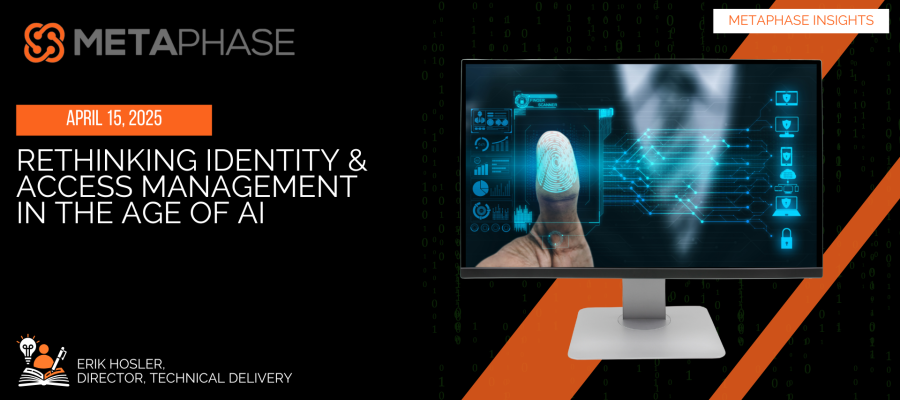
"I can recognize you without ever seeing your face, but only if I’ve met you before. What am I?"
As artificial intelligence becomes embedded in federal operations, traditional identity and access management (IAM) strategies are being redefined. Agencies that once relied on passwords and role-based access controls are now integrating AI-powered authentication, continuous monitoring, and adaptive security models to ensure that only the right people—under the right conditions—can access sensitive systems and data.
Legacy IAM models operate on fixed rules, assuming that user credentials remain valid until manually revoked. But in an era of AI-driven cyber threats, where identity fraud and credential misuse are increasingly sophisticated, static authentication measures are no longer enough. AI-powered identity verification can assess user behavior patterns, detect anomalies, and adjust access permissions in real time, ensuring proactive security rather than reactive response.
Take Zero Trust architecture as an example. Traditional security models assumed that once inside a network, a user could be trusted indefinitely. AI-enhanced Zero Trust continuously authenticates users based on behavior, device security posture, and contextual risk factors—granting access dynamically rather than permanently. If a government employee suddenly logs in from an unrecognized device in another country, AI can flag the activity, require additional authentication, or even block access entirely.
AI is also transforming biometric authentication. While fingerprint scanning and facial recognition have become standard in mobile devices, AI-driven identity verification takes it further, analyzing keystroke dynamics, voice patterns, and even subtle behavioral cues to validate user identities. These methods enhance security without adding friction to the user experience, making access both seamless and secure.
In addition to AI advancements, the adoption of passkeys is revolutionizing authentication methods. Passkeys are cryptographic keys that replace traditional passwords, offering a more secure and user-friendly login experience. They utilize public-key cryptography, allowing users to authenticate using biometrics or device-specific PINs, significantly reducing the risk of phishing attacks and credential theft. The National Institute of Standards and Technology (NIST) has recently updated its digital identity guidelines to include support for passkeys, paving the way for federal agencies to implement this technology in their IAM strategies.
Yet, with greater automation comes greater responsibility. Agencies must establish clear governance models to ensure AI-powered IAM systems remain transparent, unbiased, and compliant with federal security standards. Strong oversight, explainable AI models, and human-in-the-loop verification processes are essential to maintaining trust in identity verification systems.
The future of IAM will not be password-based, static, or purely human-controlled—it will be intelligent, adaptive, and AI-driven. Agencies that embrace AI-powered identity security and adopt passkeys will not only strengthen cybersecurity but also streamline operations, making access management more resilient, responsive, and mission-ready.
MetaPhase works at the intersection of business-to-IT partnerships—creating, deploying, and supporting practical solutions that serve as a force multiplier for government.

